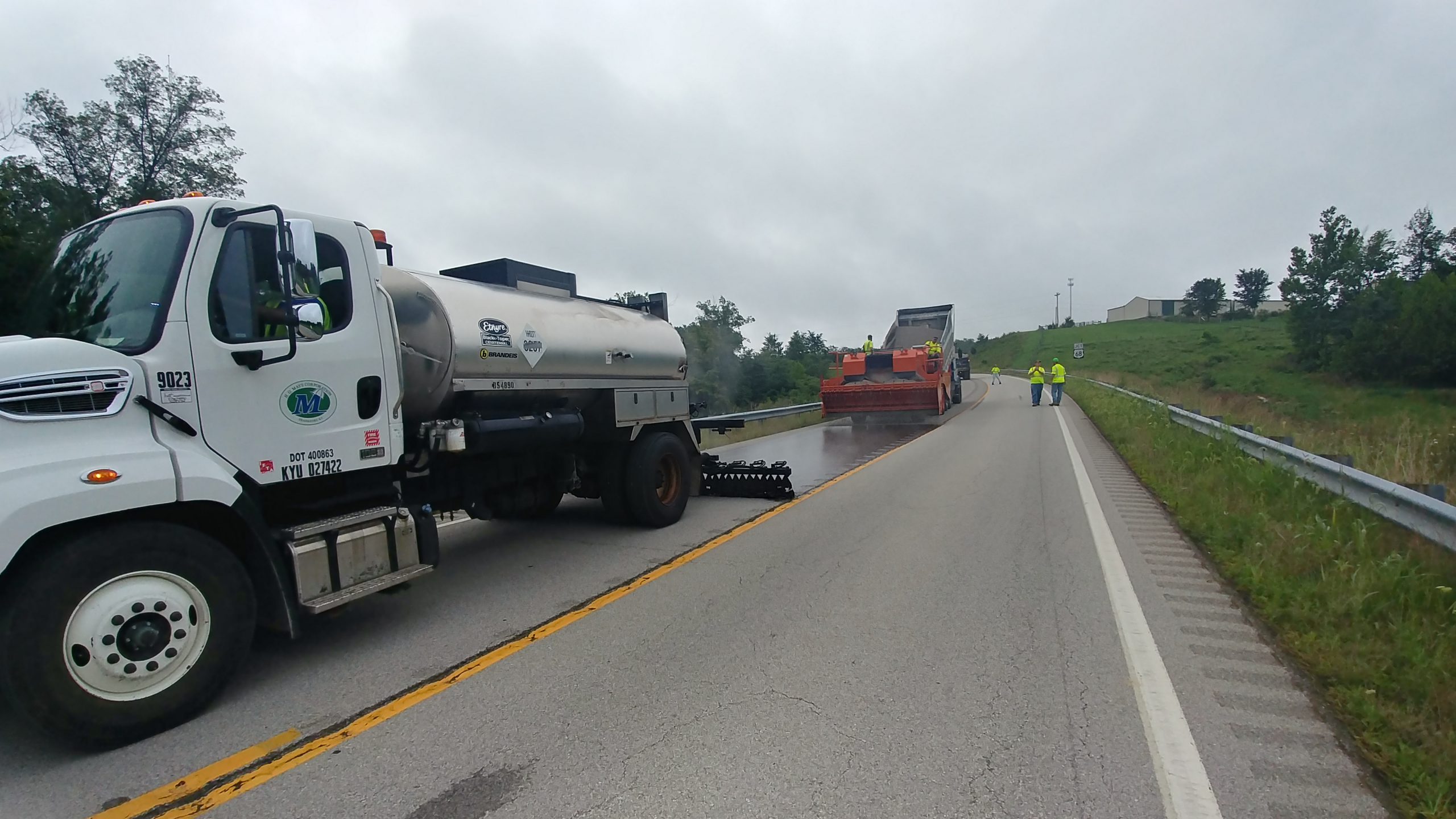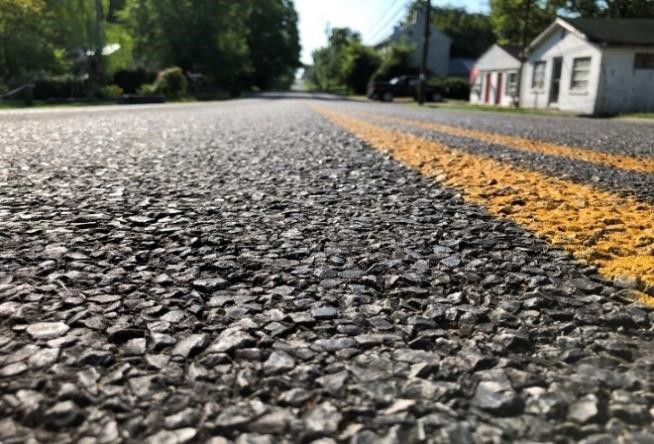Search for articles or browse our knowledge portal by topic.
Chip Seal

A chip seal protects asphalt pavements from sunlight and moisture, improves skid resistance, seals minor cracks and surface imperfections, inhibits raveling, addresses bleeding and flushing when properly designed, and protects pavement structures. Chip seals consist of an asphaltic binder sprayed on a prepared flexible pavement surface, after which aggregate is laid down immediately. Next, the seal is rolled to seat the aggregate in the binder. After sufficient curing (usually 1-2 hours depending on conditions), the surface is broomed to remove loose aggregate. The binder may be applied as a water-based asphalt emulsion, a solvent-based asphalt cutback, or hot applied asphalt. A fog seal may be placed atop the cured chip seal and swept surface to facilitate chip retention and blacken the surface. Polymers, crumb rubber, and other additives may be used to improve performance.

Chip seals have been successfully applied to all types of asphalt pavements, ranging from low-volume rural roads atop a prepared base to heavily trafficked superhighways on top of hot mix asphalt.
Ideally, chip seals should be applied when a road is still in relatively good condition with only minor surface problems (e.g., loss of friction, drying surface, very minor cracking). They may also be applied as a wearing surface shortly following cold or hot in-place recycling or another treatment, or on top of a prepared base on rural roads. Chip seals are an excellent choice for maintaining good pavements in their current condition.
- Relatively low cost and one of the most cost-effective pavement preservation treatments.
- Should not be used on rutted, potholed, rough, or moderately/severely distressed surfaces.
- Dislodged chips may damage vehicles. And there have been reports of snowplows damaging chip seals. However, a fog seal application over a new chip seal or use of a high-performance polymer asphalt binder can mitigate these problems.
- Although heavy traffic on chip sealed pavements can generate significant noise, using single-sized aggregate can greatly reduce sound levels.
- Installation should be done when the weather is dry and warm enough to allow thorough curing.
- Very strict traffic control is required before the seal has thoroughly cured to prevent damage.
| Estimated Life Extension | |
|---|---|
| Pavement Condition | Chip Seal Longevity |
| Poor | 3-4 years |
| Fair | 4-6 years |
| Good | 6-8 years |
Pavement Preservation Knowledge Book:
Access the complete Knowledge Book here: Pavement Preservation Knowledge Book
Next Article: 3.5 Thinlay
Previous Article: 3.3 Scrub Seal

